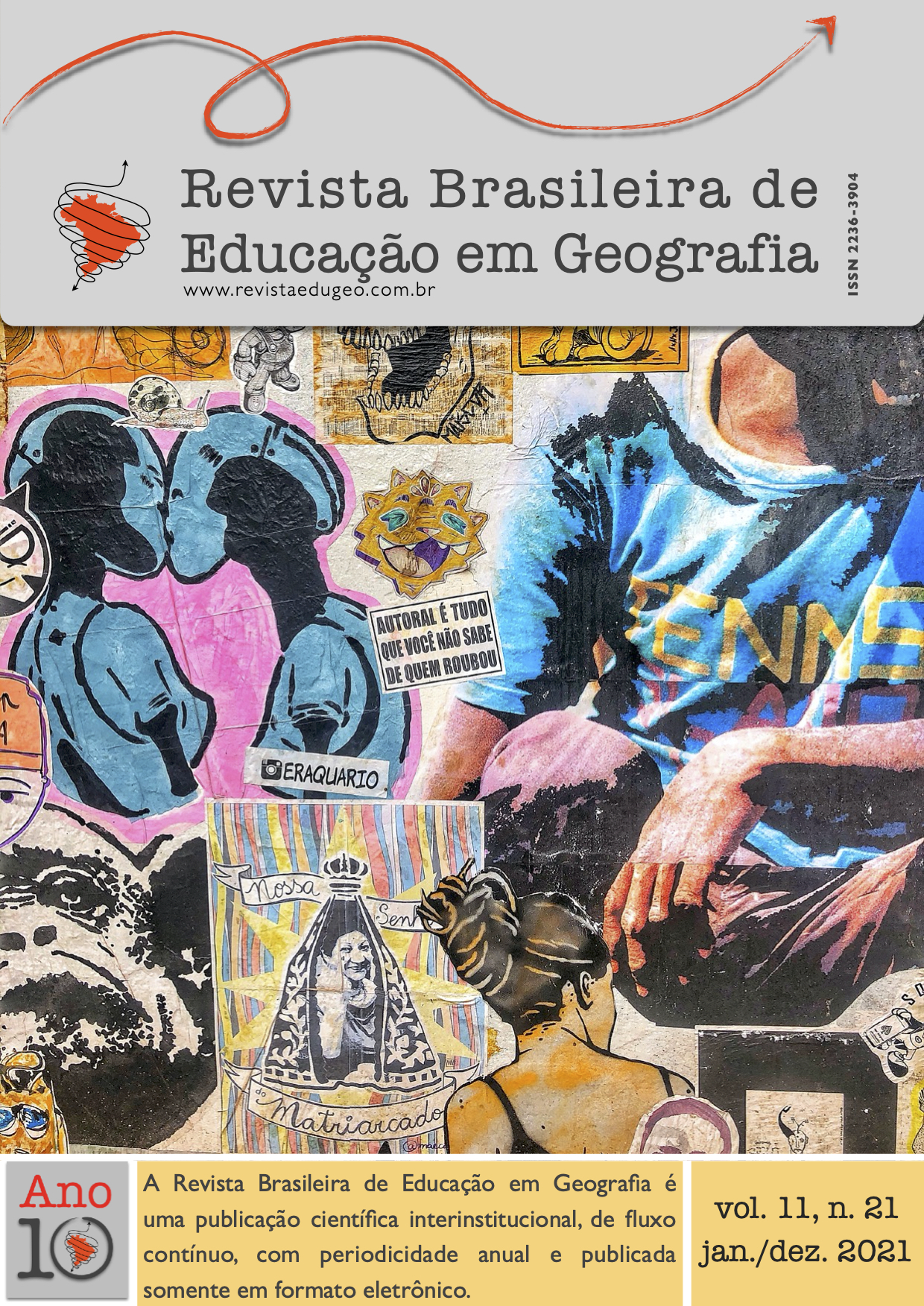ENSINO DE GEOGRAFIA NO CONTEXTO DA DIVERSIDADE E DA INCLUSÃO EDUCACIONAL
DOI:
https://doi.org/10.46789/edugeo.v11i21.978Resumen
As políticas inclusivas apontam avanços no direito à escolarização de alunos, contemplando a sua diversidade. Dessa forma, pessoas com deficiência, transtorno do espectro autista, altas habilidades e outras singularidades, vem ocupando espaços nas escolas. Contudo, há muito a ser percorrido para que a inclusão se efetive, sendo um dos pilares, a mediação pedagógica, a partir da escuta sensível, que permite atender às necessidades e especificidades dos alunos. O presente artigo intenciona analisar e problematizar as práticas docentes e os recursos didáticos, utilizados no ensino de Geografia, com ênfase na categoria Lugar e na cartografia tátil. A temática é relevante, pois há uma imagem estereotipada da geografia escolar, considerada como uma disciplina mnemônica, difícil, que urge ser desconstruída, sobretudo para alunos com deficiência, que vivenciam a chamada “inclusão marginal”. O texto é produto de uma pesquisa colaborativa, com desenvolvimento de oficinas, a partir de dados coletados em entrevistas, grupos focais e questionários. Nos achados da pesquisa, assume destaque a subtração do direito à educação, pela falta de equidade de oportunidades e de recursos táteis não usados pela grande maioria dos professores. Nesse sentido, uma educação de qualidade, para todos, é um desafio necessário e urgente que a sociedade deve assegurar.
Palavras-chave
Ensino de geografia, Diversidade, Inclusão, Cartografia tátil.
TEACHING GEOGRAPHY IN THE CONTEXT OF DIVERSITY AND EDUCATIONAL INCLUSION
Abstract
Inclusive policies point to advances in the right to schooling for students, taking into account their diversity. Thus, people with disabilities, autism spectrum disorder, high skills and other singularities, have been occupying spaces in schools. However, there is much to be done for inclusion to become effective, one of the pillars being pedagogical mediation, based on sensitive listening, which allows meeting the needs and specificities of students. This article intends to analyze and problematize teaching practices and didactic resources, used in the teaching of Geography, with emphasis on the category Place and tactile cartography. The theme is relevant, as there is a stereotyped image of school geography, considered as a mnemonic, difficult discipline, which urgently needs to be deconstructed, especially for students with disabilities, who experience the so-called “marginal inclusion”. The text is the product of collaborative research, with the development of workshops, based on data collected in interviews, focus groups and questionnaires. In the research findings, the subtraction of the right to education is highlighted, due to the lack of equity in opportunities and tactile resources not used by the vast majority of teachers. In this sense, quality education for all is a necessary and urgent challenge that society must ensure.
Keywords
Geography teaching, Diversity, Inclusion, Tactile cartography.
Descargas
Descargas
Publicado
Cómo citar
Número
Sección
Licencia
Proposta de Aviso de Direito Autoral Creative Commons
1. Declaro que o presente artigo é original, não tendo sido submetido à publicação em qualquer outro periódico nacional ou internacional, quer seja em parte ou em sua totalidade. Declaro, ainda, que uma vez publicado na Revista Brasileira de Educação em Geografia, o mesmo jamais será submetido por mim ou por qualquer um dos demais co-autores a qualquer outro periódico. E declaro estar ciente de que a não observância deste compromisso submeterá o infrator a sanções e penas previstas na Lei de Proteção de Direitos Autorias (Nº9609, de 19/02/98)
2. A Revista Brasileira de Educação em Geografia tambem segue a "Proposta de Política para Periódicos de Acesso Livre".
Autores que publicam nesta revista concordam com os seguintes termos:
- Autores mantém os direitos autorais e concedem à revista o direito de primeira publicação, com o trabalho simultaneamente licenciado sob a Licença Creative Commons Attribution que permite o compartilhamento do trabalho com reconhecimento da autoria e publicação inicial nesta revista.
- Autores têm autorização para assumir contratos adicionais separadamente, para distribuição não-exclusiva da versão do trabalho publicada nesta revista (ex.: publicar em repositório institucional ou como capítulo de livro), com reconhecimento de autoria e publicação inicial nesta revista.
- Autores têm permissão e são estimulados a publicar e distribuir seu trabalho online (ex.: em repositórios institucionais ou na sua página pessoal) a qualquer ponto antes ou durante o processo editorial, já que isso pode gerar alterações produtivas, bem como aumentar o impacto e a citação do trabalho publicado (Veja O Efeito do Acesso Livre).







